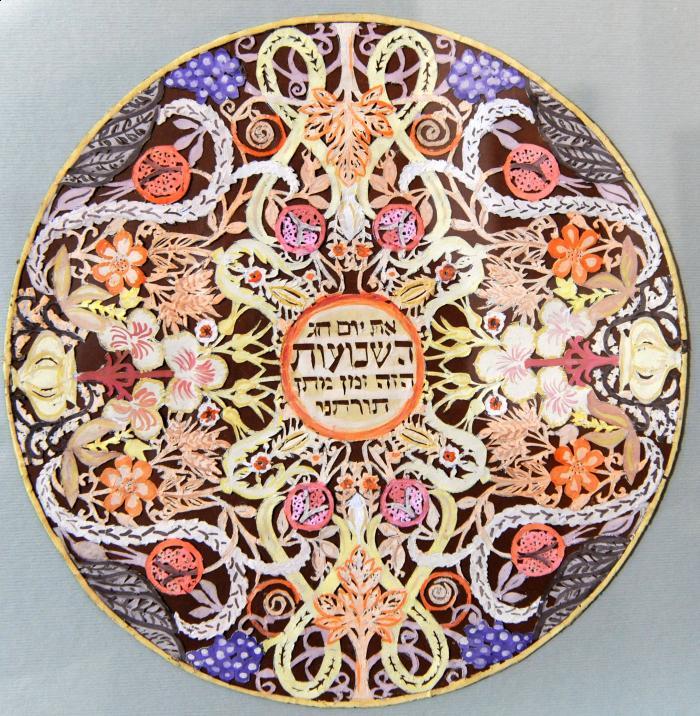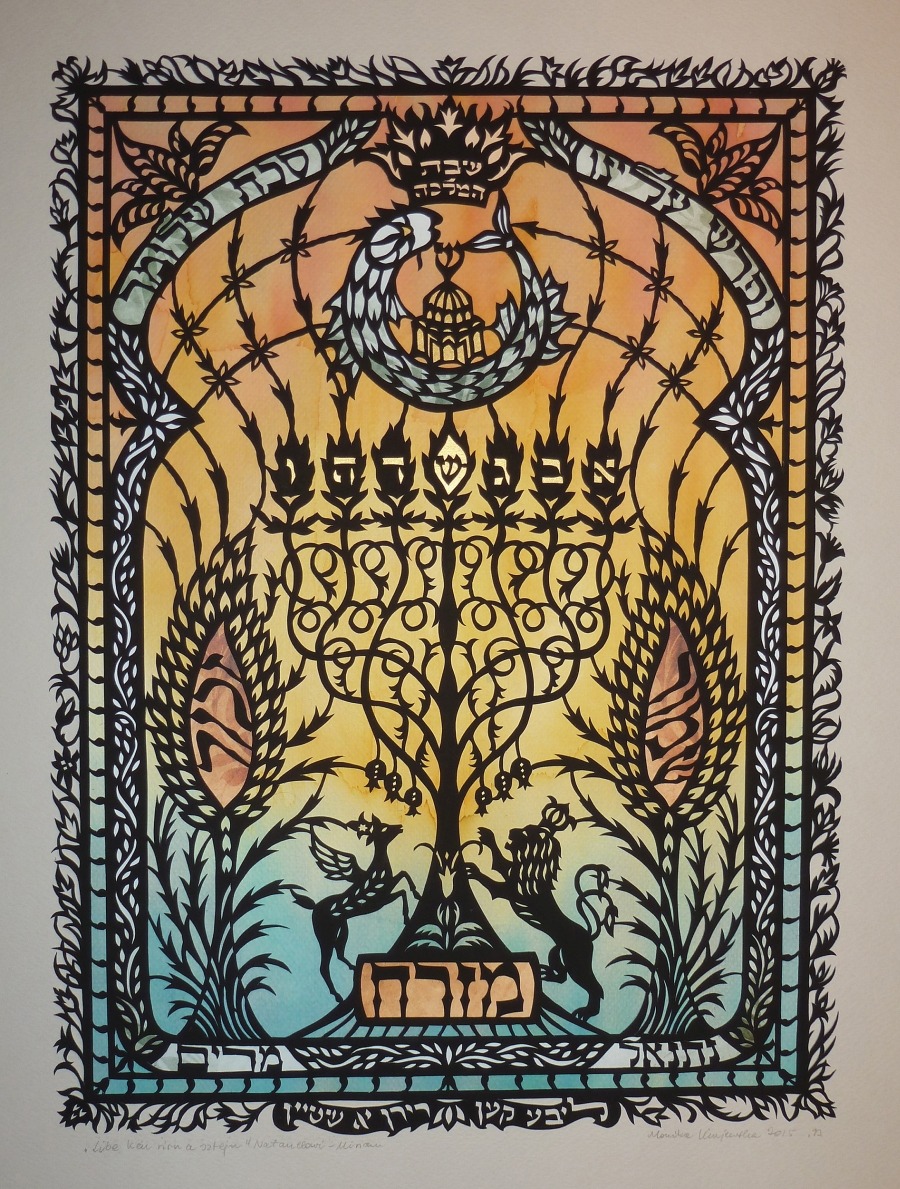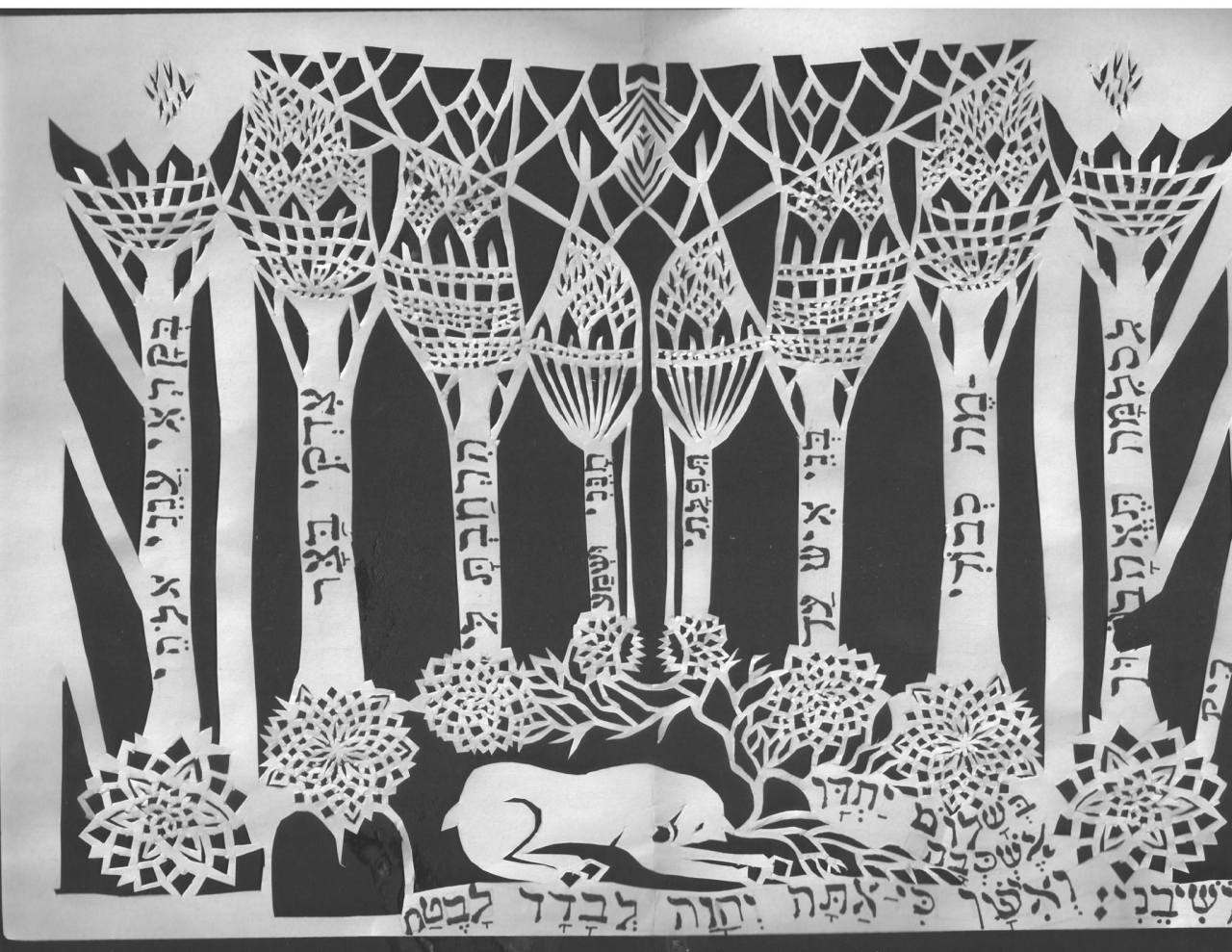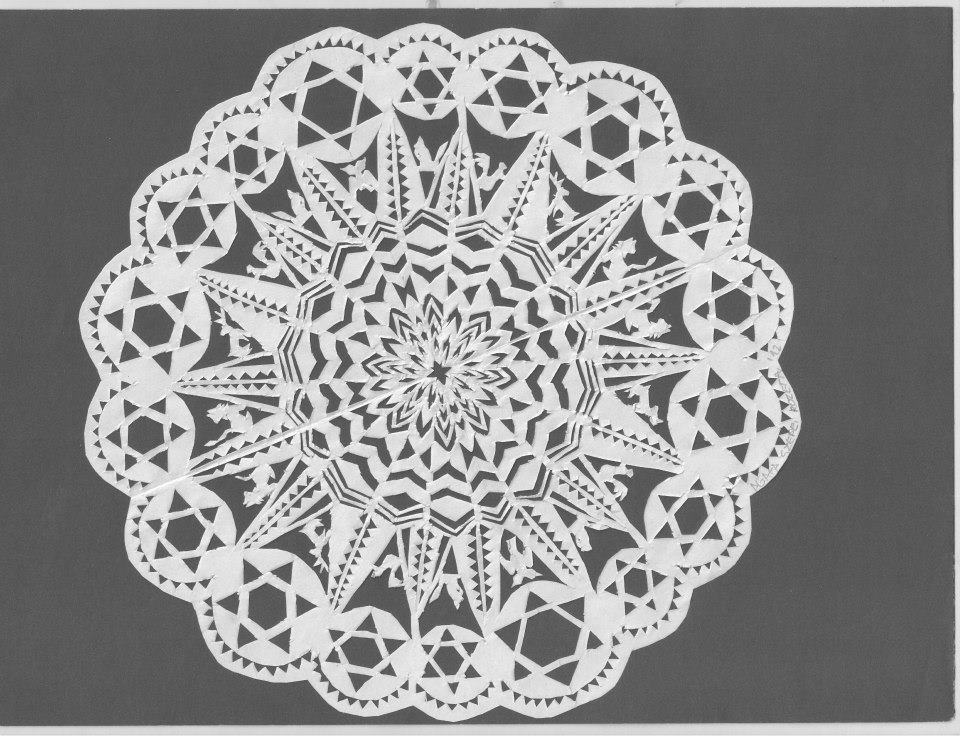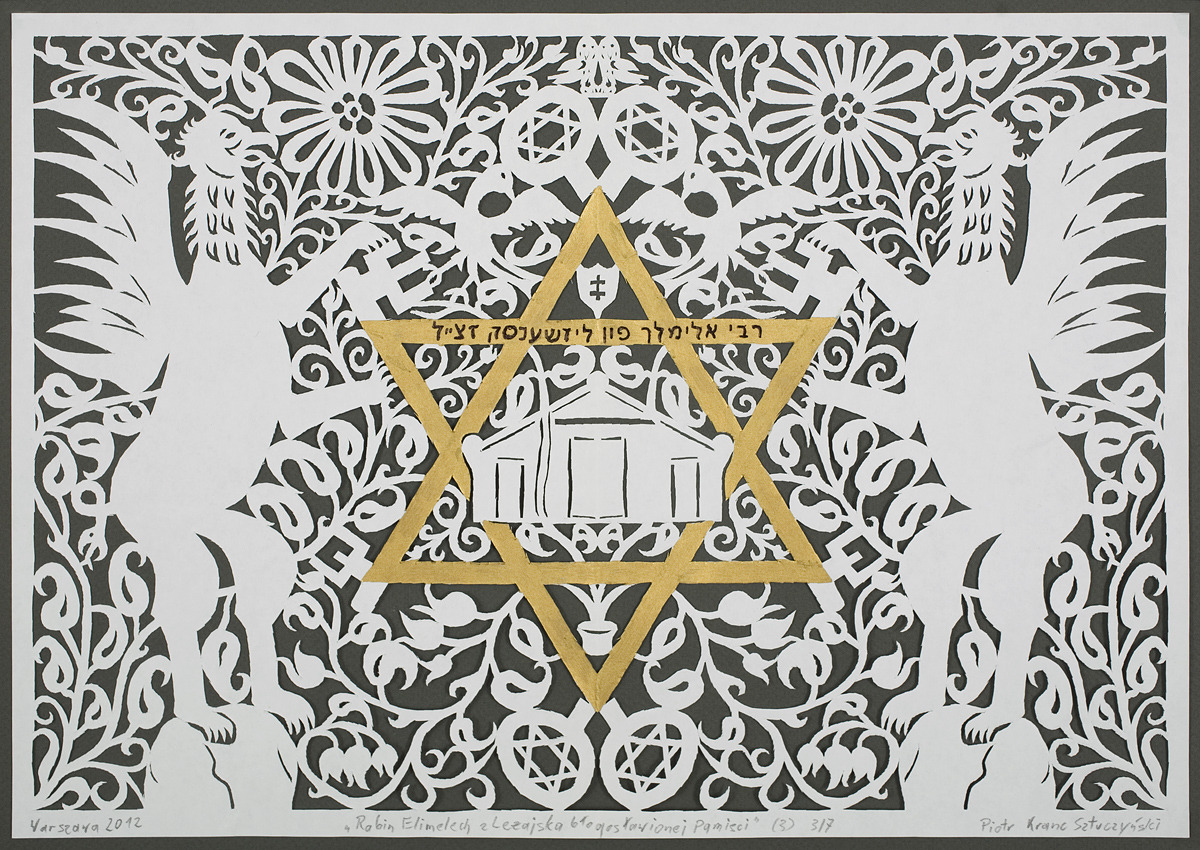History and modern revival of Jewish papercuts in Poland
Art of papercutting is an important branch of Polish folk culture and crafts. The artworks called in Polish wycinanki were decorating houses of Polish peasants in the past, and many regional styles developed over the centuries up until the interwar period. The art became extremely popular in 19th century when manufactured paper was easy to obtain in the villages, and is a follow-up of older traditions of preparing Slavic protective plaques and symbols out of other available materials. It is also partly influenced by Jewish traditions of complex paper art.
Alongside the development of Polish wycinanki, the Jewish population of old Poland (and also of other countries) was creating their own characteristic style of papercuts. Just like in the case of wycinanki made by the Polish countrypeople, the Jewish papercuts were created mainly by the poorest members of Jewish communities who couldn’t afford expensive religious plaques (like painted or embroidered). Jewish papercuts had strictly a religious character, therefore their main types designated not regions like in the case of Polish wycinanki, but mainly their symbolic function, such as:
- Mizrach (Mizrah) papercuts - hung on eastern wall and designated the direction to face during prayers (Mizrah is a general Jewish term meaning East, describing also the Eastern ‘Prayer Wall’ in synagogues)
- Sziwiti (Shiviti) papercuts - including the meditative representation of Menorah or single candlestick
- Szewnosłach (Shavouslakh) and Rojzelach (Roizalakh) papercuts - pasted to windows on the occasion of the Sukkot feast
- Hamsa papercuts - pasted to walls in rooms where a newborn was sleeping (Hamsa is a protective amulet)
- Ketuba papercuts - prepared for marriage documents (Ketubah is Jewish prenuptial agreement)
- family albums’ papercuts - pasted next to a date of death to remind the readers to pray for the deceased
- banner papercuts - the only papercuts of secular character among the Jewish population in the past, these were for example shapes of riders or soldiers that were included on banners carried by young boys during feasts of Shavuot when Torah was taken out of synagogues for processions
(I included Polish-Jewish and English spelling of the types)
Jewish tales and legends trace the custom of creating the papercuts to 13th century. According to these legends, there was once a rabbi who wanted to rewrite the Torah but had problems with cold weather - even the ink froze and he couldn’t continue his work. He came up with a better idea and started cutting out letters for the Torah, and so the first Jewish papercut was created.
Among most of Jewish communities only the males were allowed to create the papercuts. The paper was cut with the use of very sharp shears or a shoemaker’s knife, and was often painted with watercolours or pencils afterwards.
This tradition started fading out at the beginning of 20th century, but was still noticed among some Jewish communities during the interwar period (between 1st and 2nd World Wars). After the tragic invasion of Poland by the Nazi Germany, the tradition disappeared completely, and almost all of surviving papercuts were destroyed by the Nazis along with other Jewish property.
Jewish papercuts were revived after the war in USA and Israel. Most notable were analysis performed by ethnologist Dr. Giza Frankel who released a book dedicated to art of the Jewish papercuts in 1980s.
After the fall of the Soviet Block, another important centre of the Jewish papercuts’ revival became Kraków in Poland, where an annual Jewish Culture Festival is organized since 1988. Most notable artists creating the Jewish papercuts nowadays in Poland are for example Anna Małecka-Beiersdorf, Marta Gołąb, Monika Krajewska, Agata Szepe, Anna Ćwiklińska or Piotr ‘Kranc’ Stuczyński. Artworks of these artists are included in the photoset above.
Sources of pictures:
- http://www.zygmuntfrankel.com/jewishpapercut1.html
- http://www.muzeum.wloclawek.pl/pl/news.php?id=628
- http://chidusz.com/szukam-raju-wycinanki-moniki-krajewskiej-w-panstwowym-muzeum-etnograficznym-w-warszawie
- http://www.en.galiciajewishmuseum.org/jewish-papercuts.html
- http://www.agraart.pl/nowe/artists/sztuczynski-piotr-(pseudonim-kranc)-polska-agra-art-aukcje-obrazy-antyki.html
- https://www.facebook.com/jewishpapercut/
For more images, you can google ‘Jewish papercuts’ or the Polish term ‘wycinanka żydowska’.
